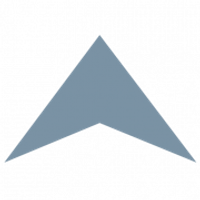
Prairiesky Royalty Ltd
TSX:PSK


| US |

|
Johnson & Johnson
NYSE:JNJ
|
Pharmaceuticals
|
| US |

|
Berkshire Hathaway Inc
NYSE:BRK.A
|
Financial Services
|
| US |

|
Bank of America Corp
NYSE:BAC
|
Banking
|
| US |

|
Mastercard Inc
NYSE:MA
|
Technology
|
| US |

|
UnitedHealth Group Inc
NYSE:UNH
|
Health Care
|
| US |

|
Exxon Mobil Corp
NYSE:XOM
|
Energy
|
| US |

|
Pfizer Inc
NYSE:PFE
|
Pharmaceuticals
|
| US |

|
Palantir Technologies Inc
NYSE:PLTR
|
Technology
|
| US |

|
Nike Inc
NYSE:NKE
|
Textiles, Apparel & Luxury Goods
|
| US |

|
Visa Inc
NYSE:V
|
Technology
|
| CN |

|
Alibaba Group Holding Ltd
NYSE:BABA
|
Retail
|
| US |

|
3M Co
NYSE:MMM
|
Industrial Conglomerates
|
| US |

|
JPMorgan Chase & Co
NYSE:JPM
|
Banking
|
| US |

|
Coca-Cola Co
NYSE:KO
|
Beverages
|
| US |

|
Walmart Inc
NYSE:WMT
|
Retail
|
| US |

|
Verizon Communications Inc
NYSE:VZ
|
Telecommunication
|
Utilize notes to systematically review your investment decisions. By reflecting on past outcomes, you can discern effective strategies and identify those that underperformed. This continuous feedback loop enables you to adapt and refine your approach, optimizing for future success.
Each note serves as a learning point, offering insights into your decision-making processes. Over time, you'll accumulate a personalized database of knowledge, enhancing your ability to make informed decisions quickly and effectively.
With a comprehensive record of your investment history at your fingertips, you can compare current opportunities against past experiences. This not only bolsters your confidence but also ensures that each decision is grounded in a well-documented rationale.
Do you really want to delete this note?
This action cannot be undone.

| 52 Week Range |
25.34
30.6
|
| Price Target |
|
We'll email you a reminder when the closing price reaches CAD.
Choose the stock you wish to monitor with a price alert.

|
Johnson & Johnson
NYSE:JNJ
|
US |

|
Berkshire Hathaway Inc
NYSE:BRK.A
|
US |

|
Bank of America Corp
NYSE:BAC
|
US |

|
Mastercard Inc
NYSE:MA
|
US |

|
UnitedHealth Group Inc
NYSE:UNH
|
US |

|
Exxon Mobil Corp
NYSE:XOM
|
US |

|
Pfizer Inc
NYSE:PFE
|
US |

|
Palantir Technologies Inc
NYSE:PLTR
|
US |

|
Nike Inc
NYSE:NKE
|
US |

|
Visa Inc
NYSE:V
|
US |

|
Alibaba Group Holding Ltd
NYSE:BABA
|
CN |

|
3M Co
NYSE:MMM
|
US |

|
JPMorgan Chase & Co
NYSE:JPM
|
US |

|
Coca-Cola Co
NYSE:KO
|
US |

|
Walmart Inc
NYSE:WMT
|
US |

|
Verizon Communications Inc
NYSE:VZ
|
US |
This alert will be permanently deleted.
 Prairiesky Royalty Ltd
Prairiesky Royalty Ltd
Prairiesky Royalty Ltd
Prairiesky Royalty Ltd., a unique player in the Canadian energy sector, operates not in the typical manner of exploration and production companies but rather as a purveyor of mineral rights. Born out of a spinoff from Encana Corporation in 2014, this Calgary-based company boasts a considerable land base of petroleum and natural gas interests, making it one of the largest owners of such rights in Canada. Without delving into the complexities and capital intensity of drilling and extracting energy resources, Prairiesky instead focuses on managing these vast landholdings, strategically licensing exploration and development rights to other companies. This approach allows it to capitalize on the energy market without the inherent risks and costs associated with extraction endeavors.
The company's revenue streams flow from leasing agreements where it collects royalties from energy production conducted by partners on its lands. These royalties typically represent a percentage of the production value, granting Prairiesky a consistent cash flow with low overhead. The company prides itself on maximizing the efficiency of its royalty portfolio, actively seeking optimization through creative lease and royalty negotiations while carefully watching commodity prices. Consequently, Prairiesky has established itself as a stable entity, providing investors with exposure to the oil and gas industry via the relative security of a diversified and effectively managed royalty base. This model offers a longstanding partnership within the resource sector, aligning incentives between energy producers and its shareholders, all without the direct burden of operational involvement.

Prairiesky Royalty Ltd., a unique player in the Canadian energy sector, operates not in the typical manner of exploration and production companies but rather as a purveyor of mineral rights. Born out of a spinoff from Encana Corporation in 2014, this Calgary-based company boasts a considerable land base of petroleum and natural gas interests, making it one of the largest owners of such rights in Canada. Without delving into the complexities and capital intensity of drilling and extracting energy resources, Prairiesky instead focuses on managing these vast landholdings, strategically licensing exploration and development rights to other companies. This approach allows it to capitalize on the energy market without the inherent risks and costs associated with extraction endeavors.
The company's revenue streams flow from leasing agreements where it collects royalties from energy production conducted by partners on its lands. These royalties typically represent a percentage of the production value, granting Prairiesky a consistent cash flow with low overhead. The company prides itself on maximizing the efficiency of its royalty portfolio, actively seeking optimization through creative lease and royalty negotiations while carefully watching commodity prices. Consequently, Prairiesky has established itself as a stable entity, providing investors with exposure to the oil and gas industry via the relative security of a diversified and effectively managed royalty base. This model offers a longstanding partnership within the resource sector, aligning incentives between energy producers and its shareholders, all without the direct burden of operational involvement.






























 You don't have any saved screeners yet
You don't have any saved screeners yet
